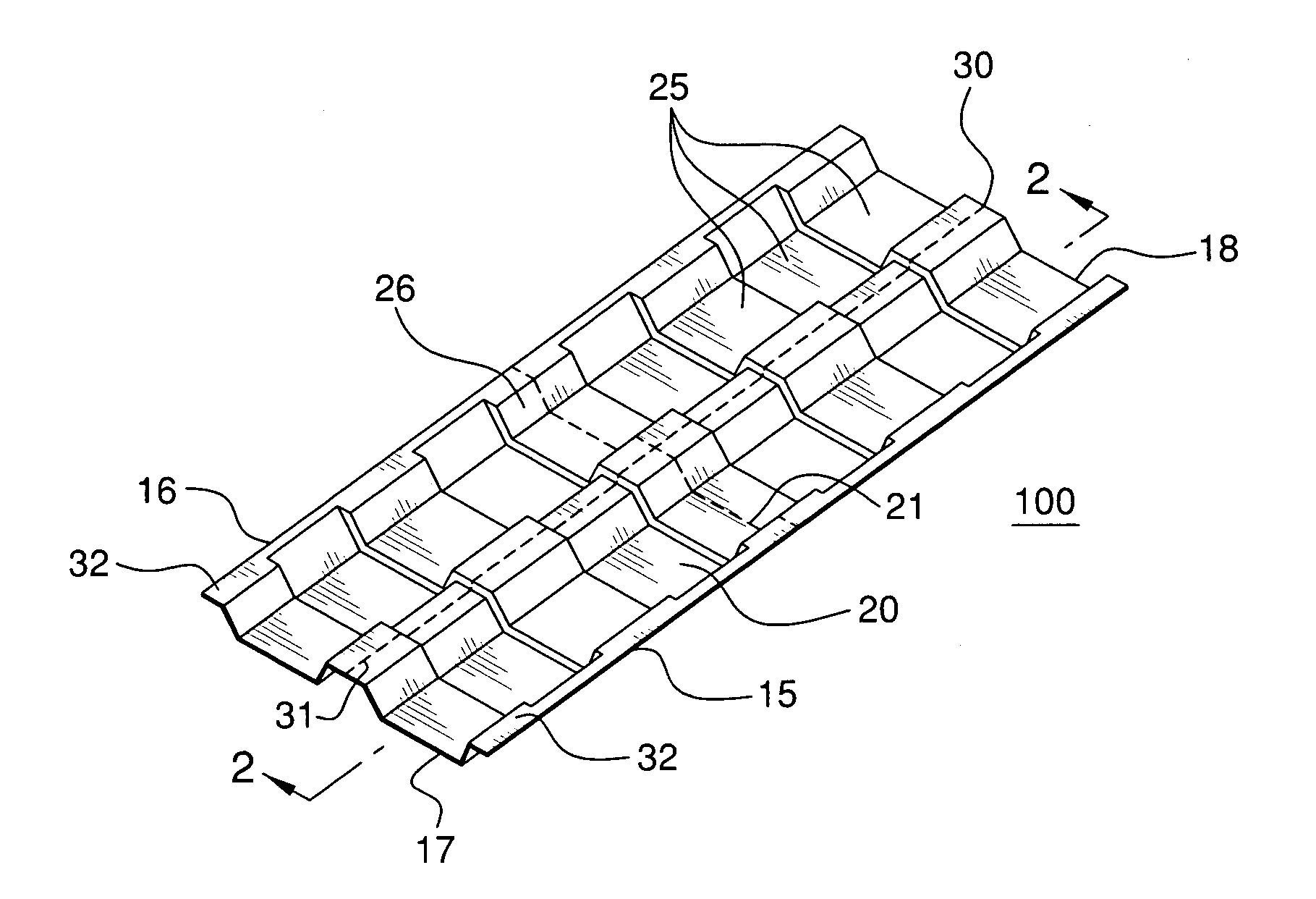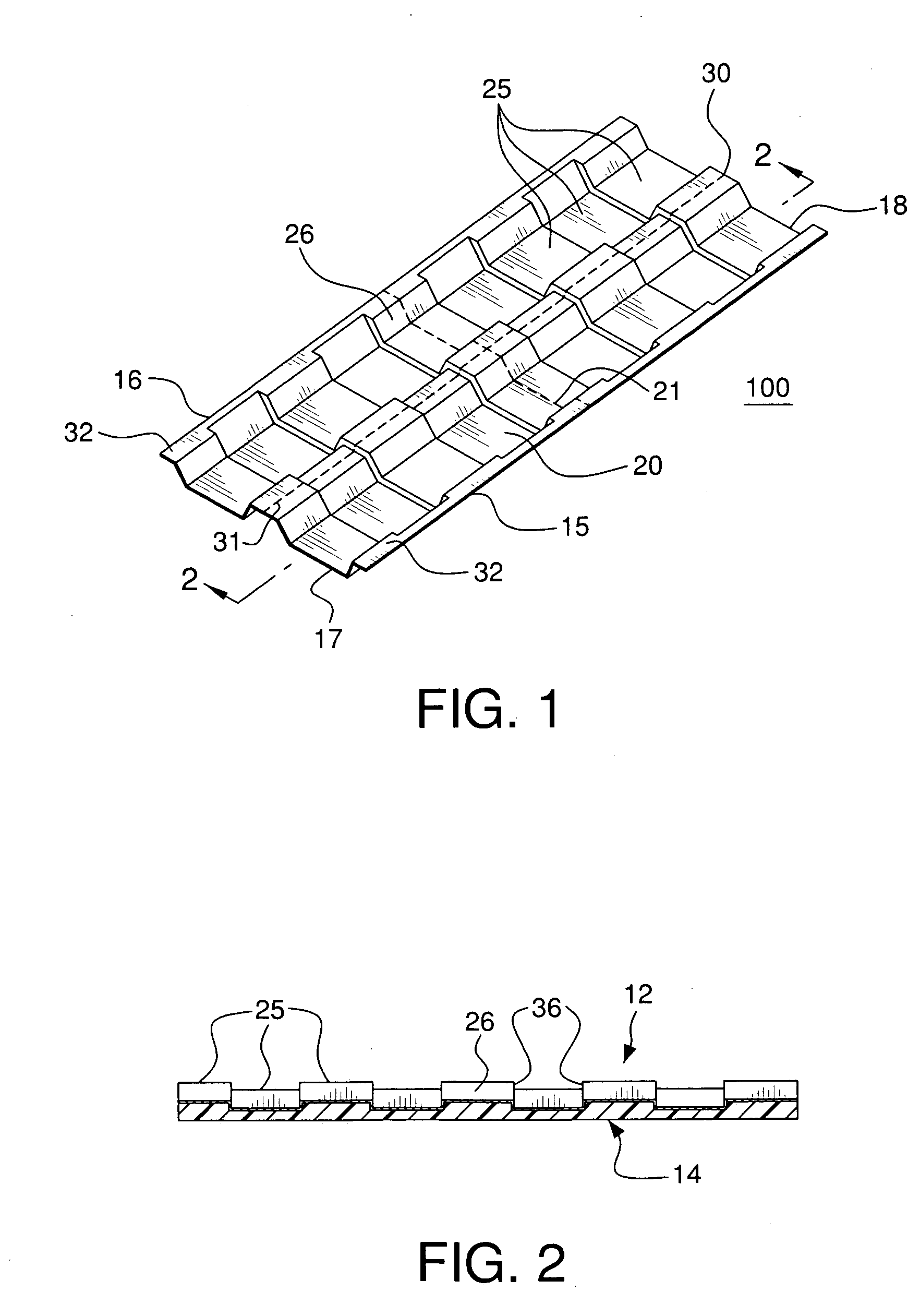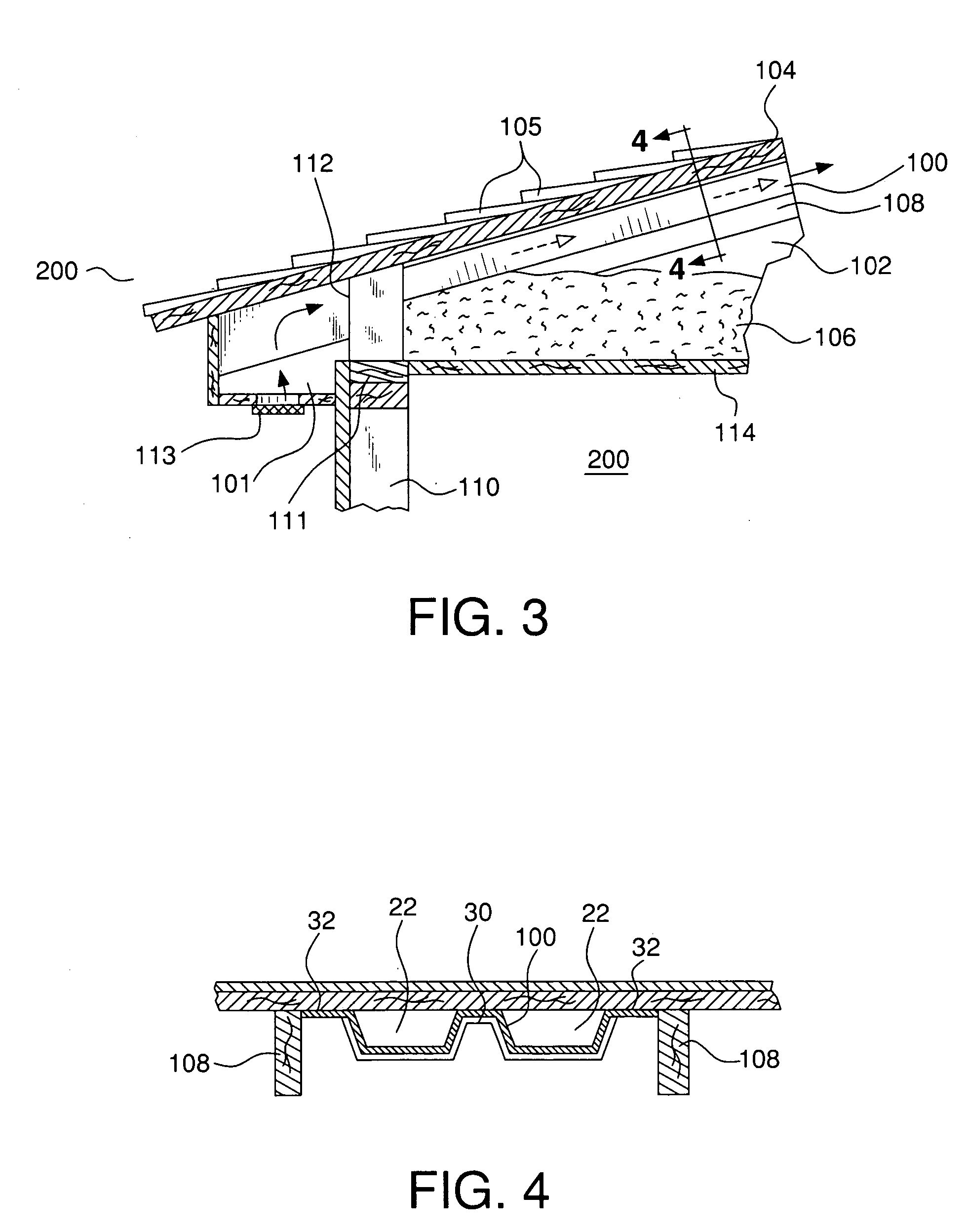Baffled attic vent including method of making and using same
a technology of attic vents and baffling, which is applied in ventilation systems, lighting and heating apparatus, heating types, etc., can solve the problems of poor air circulation, restricting air flow, and counter-productive restriction, and achieves the effect of greater air flow
- Summary
- Abstract
- Description
- Claims
- Application Information
AI Technical Summary
Benefits of technology
Problems solved by technology
Method used
Image
Examples
example i
[0035] Computational fluid dynamic analyses were performed on the illustrative example of FIG. 1 and compared with prior art competitive designs A, B, and C of FIGS. 7, 5 and 6, respectively. The proposed attic air vent 100 of this invention has only a slight increase in air flow resistance with transverse stiffeners placed to cross the open channels. In the preferred embodiment, the present vent 100 does not use supports which extent substantially into the air path, as shown in competitive designs A and B, nor does it use longitudinal supports disposed substantially in the air path, like competitive design C. This results in improved natural convection air flow under a 5 Pa air pressure differential, as analyzed by the computational, computer analysis, as found in FIG. 8. The design of FIG. 1 showed improvement of about 31-147% in air flow over competitive designs, with an air-flow range of about 95-125 CFM preferred, and a target of about 118.6 CFM. This can be accomplished with s...
PUM
 Login to View More
Login to View More Abstract
Description
Claims
Application Information
 Login to View More
Login to View More - R&D
- Intellectual Property
- Life Sciences
- Materials
- Tech Scout
- Unparalleled Data Quality
- Higher Quality Content
- 60% Fewer Hallucinations
Browse by: Latest US Patents, China's latest patents, Technical Efficacy Thesaurus, Application Domain, Technology Topic, Popular Technical Reports.
© 2025 PatSnap. All rights reserved.Legal|Privacy policy|Modern Slavery Act Transparency Statement|Sitemap|About US| Contact US: help@patsnap.com



